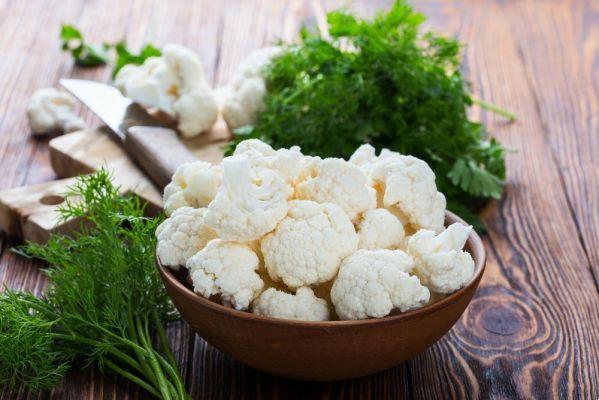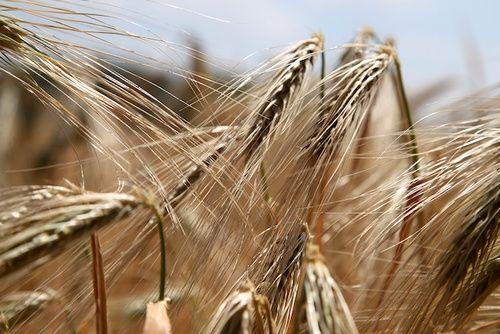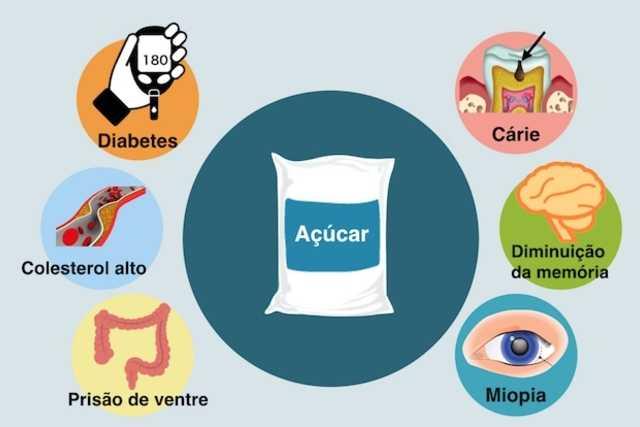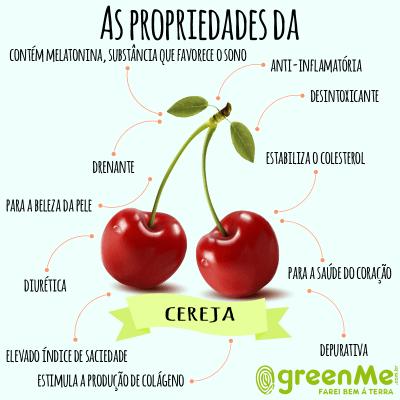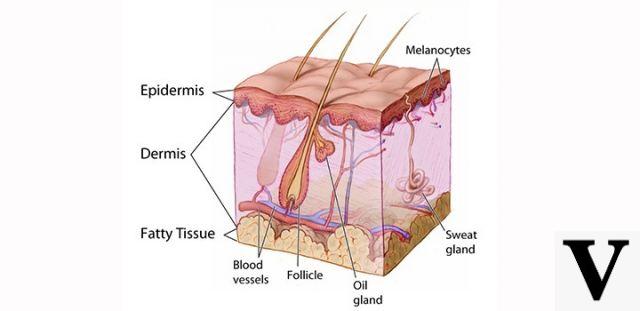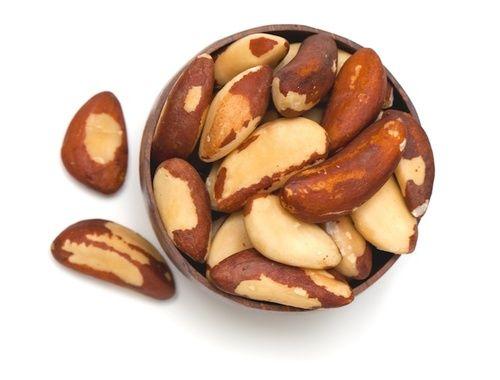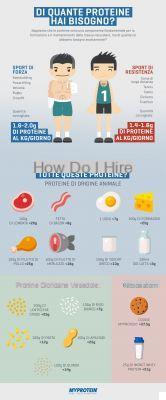
Introduction
Il protein requirement is the gross demand for dietary protein; it can refer to a population group or to a specific organism.
To the question "How many proteins do we need?", We answer: it depends!
The variables are many and can have a very considerable impact on the need for amino acids (AA) - the "building blocks" that form proteins, ie final residues from protein digestion which can therefore be absorbed.
In this article we will try to understand what should be the estimated protein requirement on the general population and the specific one of some groups, focusing in more detail on the sports population.
Protein
General information on proteins
Proteins are complex structures or polymers formed by chains of monomers called AA proteosintetici.
A straight chain of amino acids is called polypeptide and, to be defined as such, a protein must contain at least one long polypeptide. Short chains, which contain <20-30 AA, are more often referred to simply as peptides or oligopeptides.
However, proteins do not always have a linear structure either primary. By means of other chemical bridging bonds, they can fold in on themselves (alpha-helix or beta-sheet, structures secondary) and curl up (structure tertiary); several tertiary structures joined together give rise to an even more complex structure (quaternaria).
Proteins can also interact with each other or associate, forming large complexes.
Protein synthesis
The production of the protein chains takes place in the cells, thanks to an organelle called ribosome.
The sequence of AAs is established by the genomic nucleotide code (mRNA) which, in the first instance, translates only for proteosynthetics.
About half of these, however, are type essential (EAA), because the organism is not capable of synthesizing it autonomously and must necessarily introduce it with the diet.
In case the levels of the AA are insufficient DON'T essential, through specific conversion pathways, using them as substrate all the others can be obtained.
Following translation, certain AAs and peptide residues can be modified, altering their physico-chemical properties, folding, stability, activity and, nevertheless, the function of the resultants. Moreover, certain proteins also include non-peptide groups, called prosthetic or cofactors. This variability allows to synthesize a very large number of different protein molecules.
Note: the defect in the synthesis of a protein in any biological system often represents a condition incompatible with the life of the organism in question.
How long does a protein last?
The function of a protein also determines its function duration in the body; lost the ability to fulfill its biological role, each is broken down and recycled.
The average life span of proteins in the mammalian organism is 24-48 hours (with a minimum of minutes and a maximum of years).
How many proteins are there in the body and in the muscle?
Circa 1/5 dell 'body human adult it is made up of proteins.
All fabrics contain it, even if at times in very different percentages.
Il muscle for example, it contains the 20% protein and, especially in athletes, shows a high turnover of the same (25-30% of replacement general peptide).
Functions and Biological Role
Widespread in nature, proteins are essential for all living beings and perform a wide range of functions. However, with regard to their specificity, they are also completely irreplaceable between them.
This aspect depends above all on their structure and function, respectively defined by the sequence of amino acids that compose them, by the dimensions and three-dimensional conformation and, obviously, by their chemical-physical and biological properties.
What are proteins used for?
Proteins perform a multitude of functions.
They are the basis of: biological catalysts (enzymes) and some hormones, blood transporters, membrane channels in cells, cellular messengers, cell adhesion structures, elements of the immune and homeostatic systems, cytoskeleton, extracellular matrices (as in bone, cartilage , in the connective sheaths, etc.), contractile structures (such as in the muscle), etc.
The AAs that compose them, if used for energy purposes, provide on average 4 kilocalories per gram (kcal/g).
How are amino acids used for energy purposes?
To be used for energy purposes, almost all amino acids must be converted in the liver into other substrates such as: glucose (amino acids neoglucogenic or GAA) and ketone bodies (amino acids chetogenici o KAA).
A third but small category, that of the 3 amino acids branched (BCAA), can be used directly inside the fabric muscular without preliminary conversions. However, these come from the catabolism of the contractile tissue itself.
The consumption of BCAAs is however a sort of "plan B" that the muscle tissue, the only one capable of putting it into practice, exploits especially for urgencies; that is, when the primary "fast" energy substrate is scarce: glucose (from local glycogen or blood circulation).
This circumstance occurs mainly in the sports practice di competitions extreme - such as marathons, cycling tours, triathlons etc. - and / or in case of diet very low in energy terms (hypocaloric) and especially carbohydrates (low-carb diet).
When the organism is properly fed and the effort managed in the parameters of reasonableness, BCAA depletion remains within manageable levels and is perfectly compensated for in post-workout recovery.
Muscle
Types of muscle
In mammals they are distinguishable three: types of muscles: streaked skeletal (of the muscles that move the skeleton), smooth (of the hollow viscera, of the inner eye, of blood and lymphatic vessels) and cardiac striatum (of the heart).
Each has a different histological structure but, below, we will consider the skeletal striated muscle tissue; it, with the bones and joints, structures the so-called locomotor system.
Organization of striated muscle contractile tissue
To understand the true importance of proteins for striated muscle contractile tissue, it is necessary to make a brief overview of its organization.
We imagine the muscle as a multi-level structure. Its entirety is given by the association between the muscular tissue and the connective tissue covering and tendon insertion - obviously, nerves and vessels are annexed:
- On the outside, the muscle is covered by the epimysium, a dense connective sheath that merges at the ends with the tendons (also connective).
- At the lower level we find the fascicles, or groups of muscle fiber cells wrapped in another connective sheath called the perimysium.
- Each muscle fiber cell is then individually immersed in a third connective sheath called endomysium.
The cytosol of these fibrocells is almost totally invaded by bundles of myofibrils, necessary for the contraction mechanism.
Myofibrils are made up of sarcomeres in series, identifiable as the alternation of light and dark bands, delimited by thin lines called "Z" and made up of anchor proteins in turn bound to other elastic proteins called titins.
Each sarcomere is formed by bundles of parallel and alternate filaments of two types: the thin ones consisting ofactin structural and thick ones consisting of miosina physical education.
Note: myosin is not the only motor protein; kinesin and dynein also have a similar function, but applied to different processes - such as cell replication and sperm motility.
It can therefore be easily deduced that skeletal muscle, not only in its contractile but also connective portion, is composed for the vast majority of proteins - above all: actin, myosin, titin and collagen.
In sports, these proteins are strongly stressed, damaged and changed often, with a greater loss of amino acids than in a sedentary.
Need
What does the protein requirement depend on?
The dietary protein requirement mainly depends on quant protein must "to build"the organism.
This process, called protein synthesis oproteosynthesis, is classifiable in the group of processes anabolics. The opposite, namely protein lysis or proteolisi, is part of the processes catabolici or demolition.
The protein requirement therefore depends, first of all, on the "set metabolico"in force, in turn strictly influenced by biochemical and hormonal signaling.
It is in fact above all the anabolic stimulus to proteosynthesis that determines the demand for proteosynthetic amino acids - as we have said, the only ones directly involved in the structuring of proteins.
The question remains: "why should the organism impose an anabolic stimulus?". Basically for:
To grow (development), to grow (gestation and breastfeeding), to maintain, to compensate for higher losses (for example in endurance sports) and to build more suitable and effective fabrics (for example in strength sports).
Let's go into more detail.
What does the anabolic stimulus to proteosynthesis depend on?
Due to mechanical-chemical stress, aging, mutation or incorrect synthesis, protein compounds normally undergo turnover protein, or rather a "dismantling" (catabolism) and "recycling" of the remaining "intact" AAs. These can be used to synthesize a new protein.
The extent of this recovery it is a determining factor for the protein requirement. Reasoning absurdly, if recycling corresponded to 100%, the need to take dietary proteins would be practically nil.
However, we also talked about "intact" AAs. In fact, even these molecules can undergo degradation, "ruining themselves" so to speak and losing functionality; or they can end up immediately in other metabolic pathways, other than proteasynthesis, such as neoglucogenesis or ketogenesis.
Above all, these are the factors that affect the subject's protein requirement sano, sedentary e properly fed - both in terms of calories and quantity of dietary proteins and carbohydrates. Overall, in such circumstances the turnover is very efficiency and requirements protein modest.
Conversely, AA's demand would dramatically increase in the event of:
- Increase of processes anabolics physiological of proteosintesi o deposition (summary), such as:
- Growth, until the end of physical development;
- Gestation;
- Feeding time;
- Practice of sport, especially of force.
- Increase of processes catabolici physiological of proteolisi, Such as:
- Diets low calorie aimed at slimming, above all low-carb, in which the body uses part of the AAs of tissues and food to produce energy (from GAA, KAA and BCAA);
- Sports practice of resistance, such as cycling and marathons, ad high loads of training and above all of volume;
- Sports practice of force, such as bodybuilding and powerlifting (generally less than the previous one, but very much depends on the nutritional status and training load);
- Other situations:
- Third Age and functional-metabolic decline: in which resistance to anabolism and a lower intestinal absorption capacity is often evident;
- Diseases: such as severe burns, neoplasms etc.
Summing up, they have a greater impact on protein requirements:
- Age;
- Practice of sport and type of the same;
- Calorie balance (normocaloric, low-calorie, high-calorie diet) and energy distribution between macronutrients (quantity of carbohydrates);
- Body composition and above all quantity of muscle;
- State of health.
Protein requirement of the general population
I LARN (Recommended Nutrient Intake Levels) of the country suggest that the healthy general population (free from special physiological conditions or pathological-like declines), of all age groups and both sexes, could avoid the risk of protein deficiency by taking 0,71-1,11 g of dietary protein per kilogram of weight (g / kg). The values are always referred to the day (the).
Pregnant women, who show a percentage of protein deposition of 70% (80% if very young), are advised to introduce the 13% of calories (normocalorica) in the form of proteins to which others can be added 6 g.
L'WHO (World Health Organization) recommends 0,66 g / kg - and same requirements as above.
Protein requirement of the strength athlete
The strength sportsman has a greatest protein requirements compared to the average, which grow up al decrease of the Calories e vice versa.
Strength sports on a normal calorie diet
The requirement in normocalorica it varies greatly according to the bibliographic sources; observing them all we could establish a range, in which:
- he limits minimum (da American College of Sports Medicine, l'Academy of Nutrition and Dietetics e i Dietitians of Canada) corrisponde a 1,2 g / kg of weight real;
- he limits maximum (Phillips SM. Protein requirements and supplementation in strength sports. Nutrition. 2004 Jul-Aug;20(7-8):689-95.) equivale a 2,4 g / kg of weight real.
Strength sports on a low-calorie diet
According to a study by Mettler et al. Increased protein intake reduces lean body mass loss during weight loss in athletes. Med Sci Sports Exerc. 2010 Feb; 42 (2): 326-37, the increased protein requirement of a strength athlete on a diet hypocaloric it could fluctuate from a minimum of 2,3 to a maximum of 3,1 g / kg of real weight.
Strength sports on a high calorie diet
On a diet hypercaloric, the proteins necessary for growth can be between 1,6 2,4 g / kg.
Wanting to limit fatty accumulation however, some data suggest to go up to 3,3 g / kg, replacing part of the other two energetic macronutrients (carbohydrates and lipids).
As a percentage, one could calculate the 25-30% about hypercaloric.
[Leaf A, Antonio J. The Effects of Overfeeding on Body Composition: The Role of Macronutrient Composition - A Narrative Review. Int J Exerc Sci. (2017)];
[Amy J Hector, Stuart M Phillips. Protein Recommendations for Weight Loss in Elite Athletes: A Focus on Body Composition and Performance. Int J Sport Nutr Exerc Metab. (2018)].
Protein requirement in a weight loss diet
The hypocaloric slimming diet, without the necessary motor activity, in the long term can affect the muscle trophism by reducing it.
As muscles determine more than 20% of the basal metabolic rate, their depletion could lower energy consumption at rest.
To prevent catabolism, a sedentary DON'T obese in hypocaloric could assume 1,6 2,4 g / kg of real weight.
If practicing physical activity, it could reach 2,3 3,1 g/kg.
Protein requirement in the obese weight loss diet
Given the excess of adipose tissue, wanting to continue to use the coefficient to be multiplied by the real weight, for the obese the most correct interval would be 1,6 2,4 g / kg. It may increase in the case of high loads of motor activity.
Protein requirement of the endurance athlete
The sportsman of endurance in normal weight can conserve your muscle mass by consuming 1,2 2,0 g/kg in protein.
Estimated range based on various bibliographic sources.
Other population groups
Kids
In children, the protein requirement is 1,8 g / kg for babies and goes down to 1,0 g / kg for those of school age.
Preterm babies, depending on the severity, may need 2,5 4,0 g/kg.
Pregnant and breastfeeding women
The estimate of the protein requirement for pregnant women of normal weight is under discussion.
In some country a coefficient of the is frequently used 13% on total calories + 6 g. The American RDAs, on the other hand, limit themselves to recommending 1,1 g / kg.
Based on other research however, this value could easily rise to 1,66-1,77 g / kg; this would benefit the unborn child, with a lower risk of low gestational weight and mortality.
For lactating women, the RDAs advise 1,3 g / kg; some in-depth studies have however highlighted a possible unfavorable nitrogen balance and tested successfully 1,5 g / kg.
Senior citizens
Given the risk for the elderly of sarcopenia, general frailty and less ability to move, with a view to greater preservation of lean mass, it may be advisable to increase the protein coefficient of subjects in normal weight from 0,8 g / kg to 1,0–1,2 g/kg; alternatively:
- 1,2-1,5 g / kg / day for physically compromised subjects;
- 1,5-2,2 g / kg / day for those underweight;
- 1,7-2,0 g / kg / day for those wishing to increase muscle mass.
Which proteins?
It is not the subject of this article to discuss which proteins to consume.
Although composed of the same 20 AAs, animal and vegetable proteins have partly different characteristics; for example, the animal ones are more digestible while the vegetable ones have a greater thermogenesis.
It is however correct to try to reach the EAA pool by choosing high protein biological value (VB) or proteins with a mutually complementary composition - important recommendation for vegans. It is not important that it happens in the same meal.
If the total dietary intake is insufficient, it is possible integration. In this regard, those of milk are generally considered "better", in particular whey - because they have the greatest anabolic power. Whether to prefer concentrated or isolated-hydrolyzed ones depends on your needs, since they have slightly different characteristics.
For vegans, soy protein remains a must (without the danger of overdoing it with phytoestrogens).
There is no ideal quantity per meal, and it is recommended to stay among the 20 and 40 g about.
Benefits of Protein Enhancement
What are the benefits of increasing dietary protein?
It depends on whether the increase compensates for a deficit, if it falls within the recommended range or if it exceeds it.
If a deficiency was present, increasing dietary protein can only lead to health and body composition benefits. Let's not forget that in addition to muscles, they structure bones, cartilages and other connective tissues, support the immune system, etc.
Within the recommended range, on the other hand, increasing protein could bring some small benefits, especially in specific conditions or circumstances:
- In the case of a low-calorie weight loss diet: in addition to maintaining lean mass, proteins have a TID (22,5% on average) higher than carbohydrates and lipids - consuming more calories to be digested and metabolized - and are more satiating - at least in the first period, and in particular those of the fish;
- In the case of a high-calorie diet: they allow you to accumulate less fat, compared to a surplus based only on fats and carbohydrates;
- In case of growth, pregnancy and breastfeeding: they optimize the anabolic processes;
- In the case of old age: it fights anabolic resistance and circumvents the reduced absorption capacity, improves self-sufficiency and mobility, reduces fragility.
Controidications
Contraindications of high-protein diets
The important contraindications are few and mainly concern unhealthy people, sick in the kidney and / or liver (functional insufficiency, monorene, cancer patients, etc.).
Even those suffering from gastric problems and gastroesophageal reflux disease do not support large doses of protein brilliantly, especially in the evening. In this case, hydrolyzed protein or EAA supplements can help.
For others, renal disposal metabolism seems to adapt perfectly to increased work.
Obviously, too much protein can increase total calories and still promote fat storage.
If the endurance athlete keeps calories constant but introduces more proteins at the expense of carbohydrates, performance could be affected. If fats are lowered too much, the ability to oxidize them during exertion can be penalized.
More protein does not increase the chances of cancer; carbonization residues and excessive levels of nitrosamines (which can increase in products containing certain preservatives) are involved in this process.
More protein is not bad for your bones. The greater urinary excretion of calcium is compensated for by a more efficient intestinal absorption.






